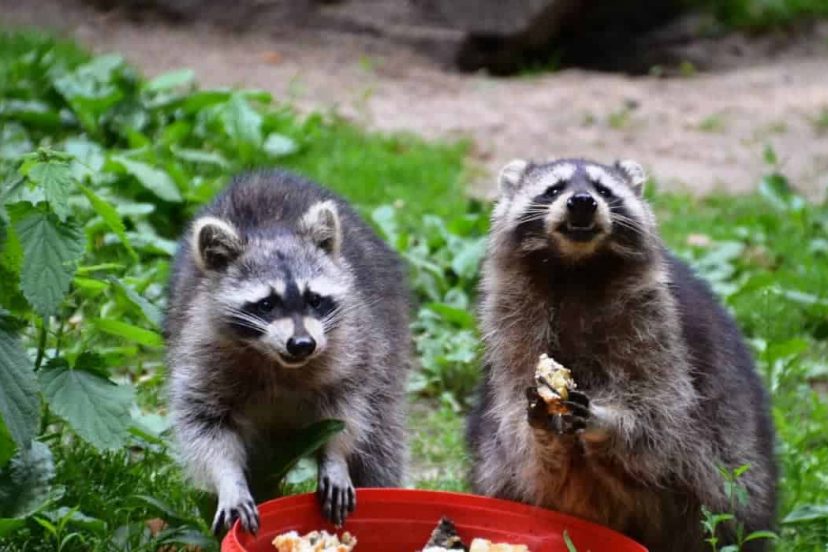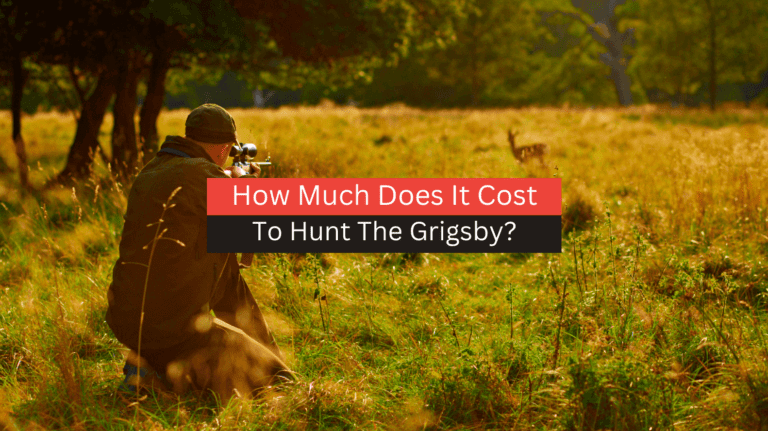Raccoons can be cute little critters, but they can also cause a lot of trouble if they get into your garbage or garden.
If you have raccoons on your property that are causing damage, you may be wondering how to trap them safely and effectively.
In this guide, we will discuss the best methods for trapping raccoons and keeping them away from your property. From selecting the right trap to baiting it properly, we will cover everything you need to know to successfully trap a raccoon.
So, if you are dealing with pesky raccoons and want to learn how to get rid of them, keep reading!
How can you trap a raccoon?
To trap a raccoon, it is important to choose the right trap and bait. Raccoons are intelligent animals with great memory, so they may be wary of traps.
It is recommended to get them familiar with the trap by tying it open first. Keep in mind that trapping a raccoon can take anywhere from a few minutes to a couple of days, so it’s important to check on the trap regularly.
To trap raccoons around buildings, the Havahart Raccoon Trap is an effective choice.
For bait, use smelly items like crisp bacon, canned tuna or sardines, fresh vegetables, or wet or dry cat food.
A cage or box trap should be used in populated areas, and it is best to call a professional trapper if you are uncertain or unable to trap the raccoon yourself.

How do you trap a raccoon in the attic?
The best way to go about trapping a raccoon in the attic is to use a live cage trap. Havahart traps are a popular choice for these situations. However, it is important to note that most raccoons won’t simply walk into a trap set inside the building. Instead, it is best to secure the trap to the roof or rig it in a way that the raccoon will have to pass through it.
As for bait, a pine cone coated in peanut butter is irresistible to raccoons. But birdseed is also a great option due to its strong aroma.
How do you trap a raccoon in your backyard?
If you are dealing with a pesky raccoon in your backyard, trapping may be a good solution. But how do you go about it?
First, it’s important to choose the right trap. A live 1-door or 2-door cage is the recommended option.
Next, bait the trap with foods that raccoons love, such as fish, bacon, and vegetables. It’s best to tie the trap open and leave the bait inside for a few days before setting it, to allow the raccoon to get comfortable with the idea of entering.
Once you are ready to set the trap, make sure to set it on a flat and stable surface in the area where the raccoon most frequently visits. And remember that raccoons are smart animals, so getting to know them and using the right bait can help you catch them.
If you are not confident in trapping on your own, there are professionals you can call to handle the job for you.
Whatever your approach, it is important to always prioritize the safety of both yourself and the raccoon.
What bait should I use to trap a raccoon?
When it comes to trapping a raccoon, choosing the right bait is essential. Sweet foods like marshmallows, sweet corn, and white bread are some of the best baits to lure a raccoon into a live trap.
Fatty meats like bacon can also be effective, but they may attract non-target animals like possums. Sardines packed in oil can be used if cats are not a concern.
Raccoons are omnivores, so they like a variety of foods. It is crucial to avoid using poison, as it can harm other animals.
In addition, it is important to know where to place the bait.
If you are trying to trap a raccoon in your backyard, place the bait near the entrance of their den or by their frequently used path.
If you are trying to trap them in the attic, place the bait near their access point. It is also essential to properly set up the live trap to ensure it’s working correctly.
What is the best way to trap a raccoon?
When it comes to trapping raccoons, the best method is to use a live trap like a Havahart Raccoon Trap. It is important to secure the trap with a weight or brick so that the raccoon can’t knock it over while attempting to steal the bait.
As for bait options, sardines, tuna, cat food, and even crisp bacon are all effective choices that raccoons love. Peanut butter is another great option to attract raccoons to the trap.
Placing the trap near the raccoon’s den or by a water source, where they typically wash their food before eating, is also recommended.
And don’t forget to check with local authorities to ensure that trapping raccoons is legal in your area. With the right trap and bait, homeowners can get rid of annoying raccoons from their property in a safe and effective way.

Who do I call to trap a raccoon?
If you’re dealing with a raccoon problem, it’s best to call a professional pest control company or local DNR or wildlife officials for assistance with trapping and relocating the animal. These experts have the knowledge and experience to safely remove the raccoon without causing harm to the animal or your property.
It is not recommended for homeowners to try and trap raccoons themselves, as they can become aggressive when trapped and may transmit diseases like rabies.
Whether you have a raccoon in your attic, backyard, or in the wild, it is important to seek the help of professionals to ensure a humane and effective removal process.
Frequently Asked Questions
Is it legal to trap a raccoon?
It is important to know the laws and regulations regarding trapping raccoons in your area. While it may be legal to trap raccoons in some states, in others it may be prohibited or require a permit.
Cage trapping of raccoons may be allowed under certain circumstances, such as when they are causing damage or posing a safety threat. But before you try to catch a raccoon, it is best to talk to a professional wildlife control operator or the local government to make sure you’re doing it safely and legally.
Remember, it is important to treat animals humanely and not use any illegal or harmful methods of trapping, such as poison.
Is it hard to trap a raccoon?
Trapping a raccoon can be a challenging task, but with the right techniques and tools, it can be done effectively. Although they are intelligent creatures, raccoons can be trapped using a live cage trap.
The tricky part is to secure the trap in a flat and stable area to prevent it from wobbling, which might scare the raccoon away.
Baiting the trap with food that raccoons love can increase the chances of trapping them. However, it is crucial to choose a trap size that is neither too small nor too large, as a smaller trap may not entice the raccoon into the confined space, while a larger trap may not hold its weight.
For homeowners, a live cage-type trap is considered the best option, while calling for professional help is always an alternative.
Despite being a challenging task, trapping a raccoon can be rewarding, especially if it helps restore peace to your environment.
How do I trap a raccoon in the wild?
To trap a raccoon in the wild, it is important to choose the right location for your trap. Look for signs of raccoon activity, such as tracks, scavenged items, or overturned trash cans.
Once you have found a suitable location, choose a trap that is big enough to trap the raccoon without causing harm. Use bait that will appeal to their omnivorous diets, such as fatty meats, sweet foods, or smooth, creamy peanut butter.
Set the trap carefully and place a towel over it to avoid scaring the raccoon.
When you catch the raccoon, it is important to relocate it at least 10 miles away from your home to prevent it from returning.
Remember to check your trap regularly and handle the raccoon with care to avoid injury to both yourself and the animal.
What kind of bait should I use to trap a raccoon?
When it comes to trapping a raccoon, one of the most important aspects is choosing the right bait to lure them in.
The experts recommend using sweet foods like marshmallows, sweet corn, and white bread, as well as fatty meats like canned fish or cooked bacon.
However, it is important to avoid using meat-based bait if you want to minimize the risk of attracting non-target animals like possums or stray cats.
Another option is using sardines packed in oil or wet cat food, but if you want to avoid attracting cats, stick to the sweet stuff.
It is also important to note that raccoons are attracted to heavily scented foods, so choose a bait with a strong odor like peanut butter or dried oats mixed together.
How do I trap a raccoon family?
If you find yourself dealing with a raccoon family on your property, it’s important to approach the situation with care and caution.
Live trapping is not recommended, as it can lead to the separation of the young raccoons from their mother, causing harm and distress.
It is best to call a professional wildlife removal service to ensure the safe and humane removal of the entire family. However, if you must trap them yourself, it’s important to use a trap that is large enough to accommodate the entire family.
Bait the trap with irresistible foods such as sardines, tuna, or cat food, and place the trap near their preferred entry and exit points.
Make sure to check the trap often and secure it so that the raccoons don’t get out by accident and hurt themselves or escape, which would make the problem last longer.
What food do raccoons like the most?
Raccoons are known to be opportunistic eaters, which means they will eat anything available to them. However, they do have their preferences when it comes to food.
Some of the foods that raccoons enjoy the most are sweet, fatty, and high in protein. Fruits such as berries, apples, and grapes are some of their favorites.
They also have a sweet tooth and love sugary treats like marshmallows, donuts, and any human food that is sweet.
Raccoons are not picky eaters, so they will also eat meat, fish, eggs, and even pet food.
They are also fond of foods with a strong odor, such as bacon and canned fish.
Knowing what raccoons prefer can be helpful when choosing the right bait to lure them into a trap.
What is irresistible to raccoons?
Raccoons have a reputation for being attracted to just about anything, but certain baits are irresistible to them.
Sweet foods like marshmallows and watermelon are some of their favorites, but peanut butter is also a top choice due to its strong aroma and stickiness.
Sardines packed in oil are another effective bait, but it is important to avoid using meat due to the risk of attracting non-target animals.
Will peanut butter attract raccoons?
One of the most effective baits for trapping raccoons is peanut butter. Raccoons love to get their paws on foods like peanut butter, jelly, and marshmallows, so it is a good idea to try baiting your trap with these first.
Peanut butter is a good bait for raccoons because it is high in fat content and easily sniffed out by these critters. A nice schmear of creamy peanut butter on a slice of white bread can do wonders.
Make sure to place the peanut butter in an area where raccoons are known to frequent and mix in additional bait with the sticky substance for the raccoon to dig out.

I am Sam Billings, an entrepreneur who runs a printing business. In my free time, I enjoy the thrill of the hunt and often spend hours pursuing game. I am passionate about hunting gear and equipment, and I take great pleasure in helping fellow hunters find the right gear for their needs. From rifles and scopes to clothing and accessories, I am always happy to share my knowledge and expertise.






